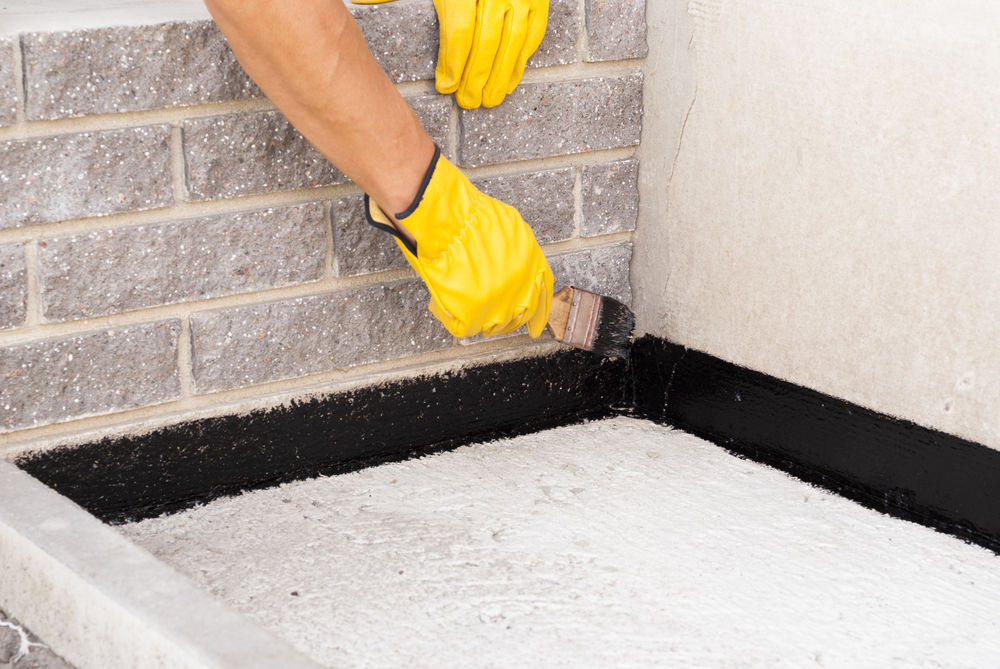Blog
Waterproofing and Damp Treatment for London’s Historic Buildings

As the UK’s capital city, it’s no wonder that London is abundant in historical buildings; the Tower of London, Buckingham Palace, and the British Museum are but a few. Although these structures are remarkable in their architecture, they weren’t originally built with modern damp proof courses (DPCs). Of course, the most famous of London’s historic buildings will have since been updated in terms of their DPC. Despite this, there are a number of historic buildings in the country’s capital that require more up-to-date structural waterproofing and damp treatment.
In the absence of these treatments, historic buildings are put at risk of damp problems, mould, and even flooding. DPCs didn’t become compulsory in London until 1875, meaning Georgian and many Victorian buildings were built without these protective measures. That said, DPC regulations have obviously evolved in the past 148 years, meaning even structures built past the late Victorian era will likely require an updated DPC.
What qualifies as a historic building?
You’d be forgiven for thinking that a historic building is simply an old building. Despite this, historic buildings are typically regarded as structures that have some form of “historical value”. This means that people in the present are connected to the building via past events.
What is structural waterproofing?
Structural waterproofing is one of the most important damp proofing measures that must be implemented in historic buildings. In the property preservation industry, this term refers to structures with earth-retaining walls (e.g., tunnels, basements, cellars, etc.).
Most commonly, Type C Waterproofing or Membrane Sealed Tanking is applied, a process in which a membrane is installed in the walls. The purpose of this membrane is to trap water ingress and pump it away from the structure.
In addition to Type C Waterproofing, we also offer Type A Waterproofing (otherwise known as cementitious tanking).
Old Basement Drainage Systems
When you think of an old basement, your mind immediately turns to darkness, dampness, and coldness. This is because old basements weren’t built with a modern DPC. Despite this, if historic buildings are being transformed into tourist attractions, the necessary measures need to be implemented to make them safe to inhabit.
In the absence of proper drainage systems, consistent water ingress can result in hydrostatic water pressure. From this, the stability of basement walls can be decreased, which can be detrimental to the structure’s overall integrity. Not only can this result in widespread damage that demands complex and costly reparations, but it’s a huge safety hazard.
What is damp proofing?
Damp treatment refers to methods that are employed to prevent damp issues, such as penetrating and rising damp, from occurring.
As the name suggests, penetrating damp is caused by water penetrating the external brickwork of a structure and seeping through to internal walls. Some common causes for this include groundwater, leaking roofs, or blocked downpipes and gutters.
Rising damp, on the other hand, is caused by an ineffective DPC, wherein brickwork absorbs groundwater like a sponge. This results in a distinctive tidemark around the ground floor external walls.
Heritage Damp Proofing for Listed Buildings
As with un-tanked basements, buildings with ineffective DPCs aren’t safe to inhabit. Not only can the effects of damp result in the structural integrity of walls being threatened, but it can lead to health complications. This is because damp problems can lead to mould growth, and these spores can be detrimental to someone’s health. After all, the presence of mould can contribute to respiratory infections, allergies, and asthma, and it can even affect someone’s immune system.
Therefore, if a historic building is intended to accommodate a bunch of tourists safely and securely, comprehensive damp proofing must be in place.
Why London Damp Specialists Are Essential
Structural waterproofing and damp proofing alike can be expensive procedures, meaning people responsible for buildings often seek a cheaper alternative. Unfortunately, structural waterproofing and damp proofing are complicated processes that require comprehensive training, qualifications, expertise, and experience to carry out properly.
If someone who isn’t a qualified damp and timber surveyor attempts to install a DPC or waterproof a basement, it won’t follow building regulations, and it will likely lead to future damage and expensive reparations. Structural waterproofing and damp proofing are investments, and they’re essential features of ensuring a property’s well-being. If historic buildings are going to continue to stand the test of time, these measures can’t be ignored.
Trust the Damp Proofing Experts
With decades of experience in the damp and timber sector and a team of qualified professionals, it’s safe to say historic buildings are in good hands with Garratt’s Damp & Timber LTD.
Get in touch today to discuss the conditions and requirements of a historic building. We can assess the property and employ the measures to keep the building standing for many more years to come.
Archived Articles
Recent
-
18 Mar 2024
How to Get Rid of Damp in Bedrooms
While it may seem more logical that kitchens and bathrooms are more prone to damp, it may be surprising for…
-
13 Nov 2023
Benefits of Tanking Your Basement
While basements have been a staple of home construction in multiple countries, they are still a relatively new concept in…
-
13 Nov 2023
Taking Action on Fixing Damp
Damp is a widespread problem in properties across the UK; however, this doesn’t stop the fact that it’s a serious…







